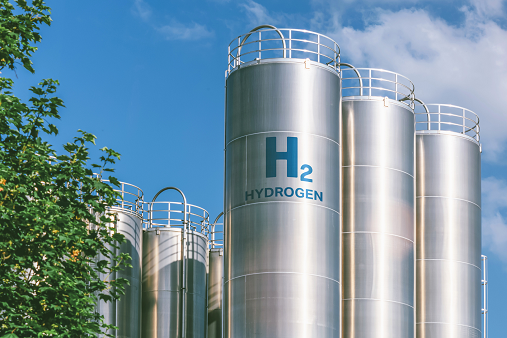On Nov. 28, the U.S. Environmental Protection Agency (EPA) published the new Resource Conservation & Recovery Act (RCRA) requirements governing hazardous waste generators in the Federal Register. The final EPA rule promulgates more than 60 revisions and new provisions to the hazardous waste generator regulatory program affecting practically every industrial sector. EPA has also reorganized the generator regulations in an effort to make it easier for generators to understand the rules and therefore comply with the program. This may be a big adjustment for existing generators and may initially cause confusion for the regulated community.
Importantly, the RCRA hazardous waste generator regulatory program is primarily administered by the states, and therefore in all states (except Alaska, Iowa and Puerto Rico), the new requirements do not take effect until they are adopted by the states. Moreover, authorized states are not required to adopt those revisions that are considered less stringent than the current regulations nor those that are considered neither more nor less stringent. The earliest deadline for state adoption is July 2018. In non-authorized states and territories where EPA enforces RCRA directly (i.e. Alaska, Iowa and Puerto Rico) the new requirements take effect May 30, 2017.
The above timelines for implementation leave significant time for action by the new president and Congress, which could potentially impact the final rule. In 1996, Congress passed the Congressional Review Act which gives Congress the authority to overturn a new regulation within 60 days on the legislative calendar of the rule being finalized. Based on Congress’ schedule, 60 legislative days can span a much longer time period than two months, and yet would almost certainly be within the six-month earliest effective date.
The final rule is based on EPA’s 2015 proposed rule. Barnes & Thornburg submitted comments on these RCRA generator requirements on behalf of concerned industries in response to EPA’s proposed rulemaking, and we have therefore been closely monitoring this program. EPA did modify the proposed regulations in response to industry comments, but there are still significant changes for hazardous waste generators. Some of the major revisions and new provisions of this RCRA rule are summarized here:
Generator Categories
RCRA includes three categories of generators historically labeled, “conditionally exempt small quantity generators” (CESQGs), small quantity generators (SQGs) and large quantity generators (LQGs). With the new rule, EPA has replaced the name “conditionally exempt small quantity generator” (CESQG) with “very small quantity generator” (VSQG). All regulations previously applicable to a CESQG now apply to a VSQG.
Into which category a generator falls is based on the amount of waste generated during a calendar month. Under the new rule, a generator must take into consideration the combination of acute hazardous waste, non-acute hazardous waste, and residues from the cleanup of a spill of acute hazardous waste generated in a calendar month when determining to which category the generator belongs.
Hazardous Waste Determinations
Under the existing regulations, generators must determine whether wastes are hazardous at the point of generation. EPA acknowledges that most generators have sufficient knowledge of their waste to determine whether it is hazardous and why. Although not a change in procedure, the new rule clarifies an agency interpretation that waste is regulated “as generated” before any mixing, treatment, or dilution.
SQGs and LQGs must maintain hazardous waste determination records for three years. However, one of several of EPA’s proposed changes, which was not adopted in the final rule, included a recordkeeping requirement to maintain all of the determinations that wastes were non-hazardous which would have added a significant burden on generators.
Hazardous Waste Containers
There are new requirements regarding marking hazardous waste containers with RCRA waste codes, the hazards of the contents and the dates of initial accumulation. Since, under the federal program, VSQGs are not required to mark and label their containers, if a treatment, storage and disposal facility (TSDF) receives a shipment directly from a VSQG, the TSDF is responsible for properly marking the container.
Large Quantity Generator Facility Closure Requirements
LQGs must notify EPA or the authorized state at least 30 days prior to closing their facility and 90 days after closing the facility. If needed to obtain a clean closure of a facility, LQGs may request additional time; however, the request must be made within 75 days after closing the facility and provide an explanation as to why the additional time is needed.
Local Waiver of the 50-Foot Property Line Buffer for Storage of Ignitable and Reactive Waste
Some urban generators expressed concern that it was physically impossible to accumulate ignitable or reactive waste at least 50 feet from the site’s property line. The new regulation allows an LQG to apply for a site-specific waiver from the authority with jurisdiction over the fire code if the LQG is unable to meet the 50-foot property line condition.
Contingency Plans and Personnel Training
In order to give first responders quick access to key information in the event of an emergency, new LQGs (or LQGs amending their contingency plans) are now required to submit a “quick reference guide” to local emergency responders along with their contingency plans. The new rule also allows generators to use computer-based and electronic training options to complete the personnel training requirements instead of or in addition to classroom instruction and on-the-job training.
New Items Specific to VSQGs and SQGs
Under existing rules, VSQGs have very few independent requirements, but a VSQG does have to make a waste determination and determine its generator category. The new EPA rule provides some greater flexibility for smaller quantity generators. VSQGs (and SQGs) can maintain their smaller status if there is only episodic generation of larger quantities, subject to certain conditions. Under certain circumstances, VSQGs can send waste to an LQG facility under control of the same company to be consolidated before the waste is sent to a TSDF. Satellite accumulation areas (SAA) are now allowed for VSQGs. VSQGs and SQGs must now re-notify the EPA of their generator status every four years starting in 2021.
New Framework for Independent Requirements and Conditional Exemptions
As part of the rulemaking process, EPA determined that the generator requirements could be divided into: (1) “independent requirements” that every hazardous waste generator must meet, and (2) “conditions for exemption” that a generator who also accumulates waste must meet only if it wants the benefits of an exemption. The final version of 40 CFR 262.10(a) contains both a list of independent requirements which apply to each generator category, and cross-references the sections where generators can find the conditions for exemptions.
Violation of a condition for exemption, which under the new rules includes any deviation from the accumulation requirements, may result in an entity losing its storage facility exemptions and becoming a TSDF operator subject to storage facility regulations. EPA asserts that this enforcement consequence does “not alter the way the generator regulatory scheme has operated over the last 30 years” and does “not signal a change from how most enforcement actions have been pursued when a generator is found in noncompliance with a condition for exemption.” EPA attempts to appease the regulated community by stating that “agencies continue to retain full enforcement discretion authority to determine whether an enforcement action is warranted.” Despite EPA’s reassurances, the new language represents a major shift in the enforcement model which may lead to an excessive number of violations and penalties.
Conclusion
These new RCRA rules affect every hazardous waste generator. Most importantly, the changes affect how generators manage their hazardous waste. The reorganization of the rules will also require updates to environmental management systems and other materials that reference the prior regulations. Regulated entities need to consider monitoring their state’s adoption of some or all of these requirements and will need to consider carefully reviewing how the new RCRA rules change their current waste management practices.
For more information, please contact a member of Barnes & Thornburg’s RCRA team:
- Jennifer Baker at Jennifer.Baker@btlaw.com or (317) 229-3016
- Mike Scanlon at Michael.Scanlon@btlaw.com or (317) 231-7387
- Tammy Helminski at Tammy.Helminski@btlaw.com or (616) 742-3926
- Joel Bowers at Joel.Bowers@btlaw.com or (574) 237-1287
- Elizabeth Davis at Beth.Davis@btlaw.com or (404) 264-4025
- Charlie Denton at Charles.Denton@btlaw.com or (616) 742-3974
- Bruce White at Bruce.White@btlaw.com or (312) 214-4584
© 2016 Barnes & Thornburg LLP. All Rights Reserved. This page, and all information on it, is proprietary and the property of Barnes & Thornburg LLP. It may not be reproduced, in any form, without the express written consent of Barnes & Thornburg LLP.
This Barnes & Thornburg LLP publication should not be construed as legal advice or legal opinion on any specific facts or circumstances. The contents are intended for general informational purposes only, and you are urged to consult your own lawyer on any specific legal questions you may have concerning your situation.
Visit us online at www.btlaw.com and follow us on Twitter @BTLawNews.

















